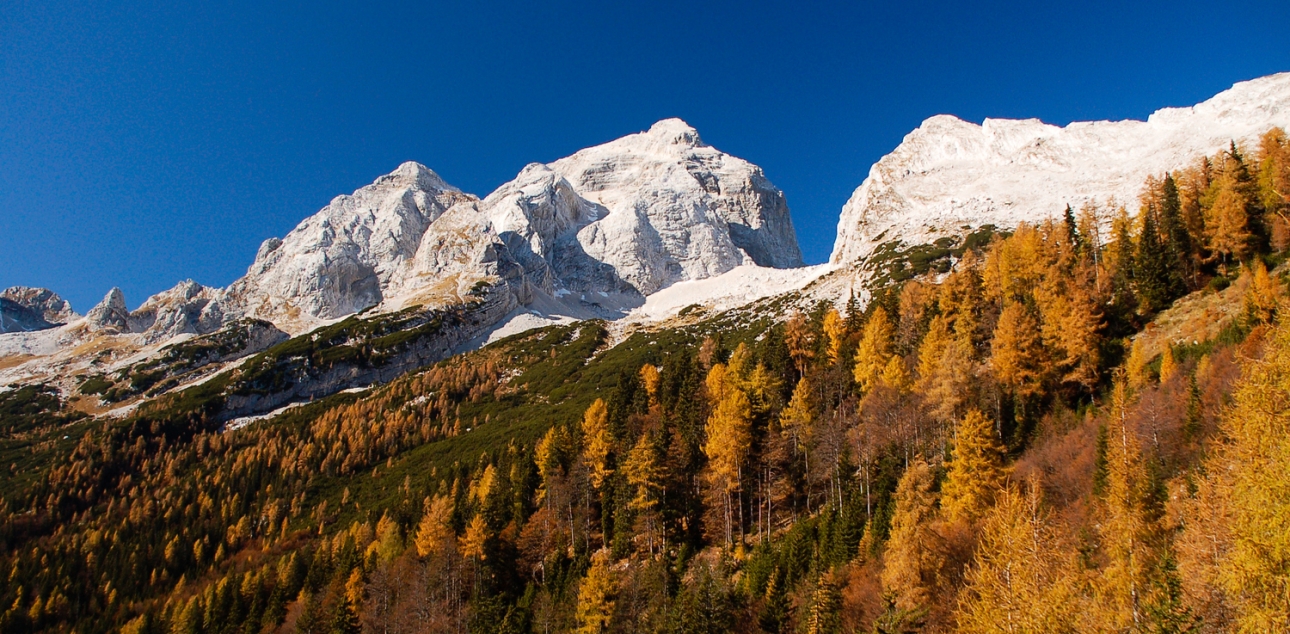When we think of forests in the Julian Alps, we think of tree species such as beech, spruce, and larch. However, in addition to these, warm-loving stands of hophornbeam and small ash tree are also characteristic, and can be found on the southern side of the park.
The mountain world is characterized by harsher climatic conditions. Only those species and representatives that manage to adapt to these conditions survive. On the Soška side of the park, the upper forest boundary does not exceed 1600 meters above sea level. The highest-reaching tree species is beech. It thrives in a climate with enough cloud cover and precipitation. However, it does not grow as high as spruce and larch, for example. In the interior and northern part of the park, spruce and larch have found their growing place in the upper forest zone, forming the forest boundary at 1800 meters above sea level.
In the dark undergrowth, only a few plants thrive. The most common are fir clubmoss, small cow-wheat, woodrush sedge, one-flowered wintergreen and several mosses. Bushy lichens are an indicator of clean air.
In the forests, many rare and protected plant species can be found. In the alpine beech and larch forests, the beautiful lady's slipper orchid grows, and in the forests, we also find the heart-leaved twayblade, white adder's mouth, narrow-lipped helleborine, and other rare plants.
Connected woodlands are home to a variety of animal species. In early May mornings we can hear the mating call of the black grouse or rejoice in the liveliness of a squirrel jumping from one tree to another. Ant-hills composed of tree needles offer shelter to forests ants. Deer and red deer are common residents of these forests.
DO YOU KNOW?
- The largest larch tree in the Park has a circumference of 422 cm and is 1050 years old.
Thank you.











